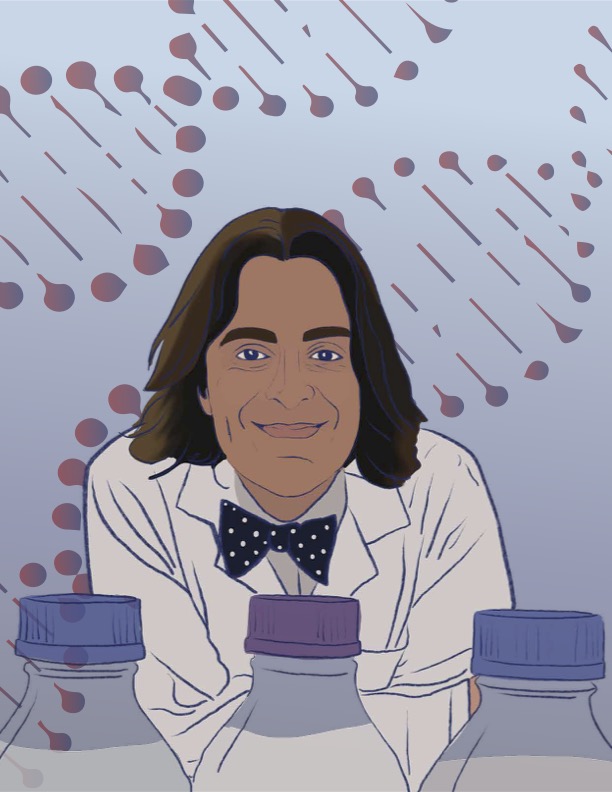
Michael Mitchell, J. Peter and Geri Skirkanich Assistant Professor of Innovation in the Department of Bioengineering, is one of this year’s recipients of the National Science Foundation’s CAREER Award. The award is given to early-career faculty researchers who demonstrate the potential to be role models in their field and invest in the outreach and education of their work.
Mitchell’s award will fund research on techniques for “immunoengineering” macrophages. By providing new instructions to these cells via nanoparticles laden with mRNA and DNA sequences, the immune system could be trained to target and eliminate solid tumors. The award will also support graduate students and postdoctoral fellows in his lab over the next five years.
The project aligns with Mitchell’s larger research goals and the current explosion of interest in therapies that use mRNA, thanks to the technological breakthroughs that enabled the development of COVID-19 vaccines.
“The development of the COVID vaccine using mRNA has opened doors for other cell therapies,” says Mitchell. “The high-priority area of research that we are focusing on is oncological therapies, and there are multiple applications for mRNA engineering in the fight against cancer.”
A new wave of remarkably effective cancer treatments incorporates chimeric antigen receptor T-cell (CAR-T) therapy. There, a patient’s T-cells, a type of white blood cell that fights infections, are genetically engineered to identify, target and kill individual cancer cells that accumulate in the circulatory system.
However, despite CART-T therapy’s success in treating certain blood cancers, the approach is not effective against cancers that form solid tumors. Because T-cells are not able to penetrate tumors’ fibrous barriers, Mitchell and his colleagues have turned to another part of the immune system for help.
“A macrophage is another type of immune cell of the innate immune system, the system that responds first to infections or wounds in our bodies,” says Mitchell. “These cells are characterized by their response to invaders, they engulf foreign substances and create a barrier between them and the rest of the body.”
Macrophages, literally “big eaters,” will naturally swarm to a splinter or bacterial infection; the inflammation that forms around them is the result of them trying to swallow or surround the invaders. However, macrophages will also attack benign or helpful foreign objects, like transplanted organs, medical implants, IVs or cosmetic piercings.
While this immune response can hinder medical care, Mitchell and his colleagues are counting on it. Their research aims to give macrophages a new purpose: engulfing nanoparticles to engineer macrophages to target and kill tumor cells.
“We are using the natural behavior of macrophages to our advantage,” says Mitchell. “A macrophage will engulf nanoparticles introduced into the body, however, we can use that response to deliver mRNA into macrophages as a means to engineer them to target solid tumors. Once inside a tumor, the engineered macrophages will kill the cancerous cells from the inside.”
While the focus of this project is on engineering aspects of the innate immune system, the results will have an effect on the adaptive immune system as well.
“The adaptive immune system is that part of our immune system that learns how to identify invaders so that next time we come into contact with the virus or bacteria, our body can quickly fight it,” says Mitchell. “When tumor cells die, they release antigens that are taken up by immune cells known as antigen presenting cells, which then present these antigens to prime a long-term adaptive immune response. This means that our work has the potential to benefit the immune system as a whole, creating a stronger response to cancerous cells overall.”
The microscopic world of mRNA, DNA and vaccines can be hard to comprehend for those outside of the field.
“Because mRNA technology is fairly new technology and can be hard to understand, it is not surprising that people have hesitancies around receiving the COVID vaccine or other therapies using this technology,” says Mitchell. “There are many questions we aim to answer for the public to cut through misunderstanding and misinformation in this space.”
In an effort to share this research in a more engaging and tangible way, Mitchell and his grad students are planning to bring live nanoparticle demonstrations to the Franklin Institute, offer research internships for high school students and present at the International Summer School in Greece.
“It is very important to invest in public outreach on our work in immunotherapy and vaccine development because it helps to build trust in our community and removes some of the fear of the unknown,” says Mitchell. “And, we want to share our work in engaging ways while opening avenues into STEM studies for younger generations. We are excited to do that through workshops on how to make nanoparticles and interactive LEGO demonstrations that help people understand nanoparticle-cell interactions.”
This funded project is collaborative across many departments and labs at Penn and will reach specific educational objectives to engage women, underrepresented and first-generation STEM students in immunoengineering.
